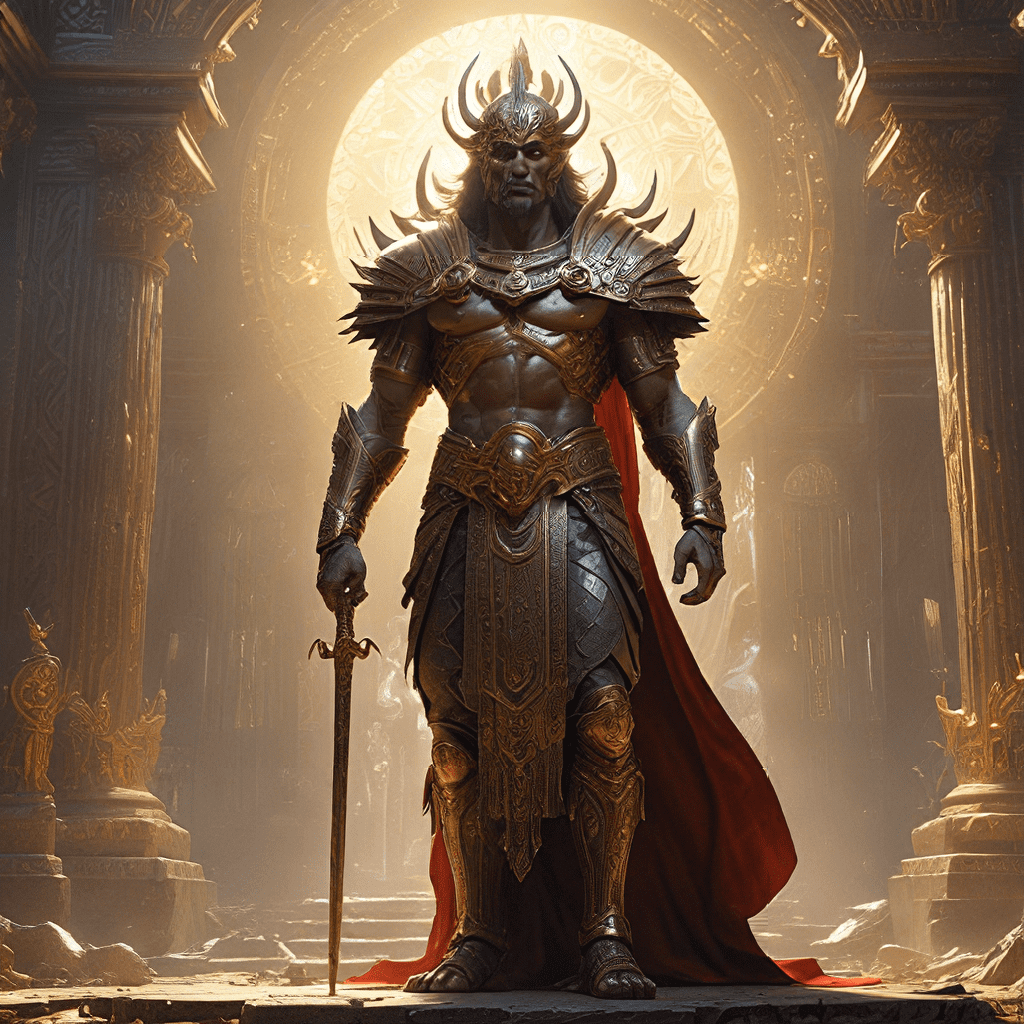Ra: The Sun God of Ancient Egypt
I. Introduction
In the rich tapestry of ancient Egyptian mythology, Ra stands as a paramount figure, embodying the very essence of the sun and its life-giving power. This powerful deity was not, as some believe, the god of the afterlife; that distinction belongs to Osiris. Ra, however, played a crucial role in the creation and sustenance of the world, shaping the beliefs and practices of the ancient Egyptians. Misconceptions surrounding Ra’s dominion often confuse him with Osiris, emphasizing the need for a clear understanding of his true role in the Egyptian pantheon.
II. The Creation Myth of Ra
The creation myth of Ra centers around the concept of self-creation. According to this narrative, Ra emerged from the primordial waters of Nun, a vast expanse of nothingness that existed before the universe. Ra, in his essence as Atum, the self-created deity, manifested himself from this chaotic void, bringing forth order and light. This act of creation marked the beginning of time and the emergence of the cosmos. From Ra, other deities were born, including Shu (air) and Tefnut (moisture), who further shaped the world, giving rise to the earth, sky, and all living things.
III. Ra as the Sun God
Ra’s most prominent role is that of the sun god. Each day, he embarked on a celestial journey across the sky in his solar barque, bringing light and warmth to the world. His journey began in the east, where he rose as the morning sun, symbolizing the beginning of life and renewal. As he traversed the heavens, Ra’s power illuminated the earth, granting life to plants and animals. In the evening, he descended into the west, marking the end of the day and the onset of darkness. The setting sun symbolized the cycle of death, but also held the promise of rebirth, as Ra would emerge anew in the morning.
IV. Ra’s Role in Maintaining Order
Beyond being the sun god, Ra was also the embodiment of Ma’at, the concept of cosmic order and justice. This principle of balance governed all aspects of the universe, from the natural cycles of life and death to the social and political order of ancient Egypt. To maintain this delicate equilibrium, Ra engaged in a constant struggle against Apep, the serpent of chaos, who sought to disrupt harmony and plunge the world into darkness. This epic battle played out each night, as Ra triumphed over Apep, ensuring the cyclical return of the sun and the preservation of the world.
V. The Ennead and Ra’s Family
Ra was not isolated in his power. He was part of the Ennead, a group of nine major deities who represented the fundamental forces of creation and order. This divine family played a crucial role in sustaining the world, ensuring its continued existence and prosperity. Among Ra’s children were Shu, the god of air, and Tefnut, the goddess of moisture, who together formed the foundation of the cosmos. This familial dynamic highlighted the interconnectedness of the deities and their shared responsibility for maintaining harmony in the universe.
VI. Ra’s Transformation and the Appearance of Other Gods
Throughout Egyptian history, Ra’s image evolved, reflecting the changing beliefs and needs of the people. He took on various forms and names, often merging with other deities. This process of transformation resulted in the emergence of other sun gods, such as Atum, who was often identified with Ra, and Horus, the falcon god who ascended to the throne as the king of the gods. These deities shared certain attributes with Ra, reflecting his enduring importance as a source of light, life, and order.
VII. Ra in Egyptian Art and Literature
Ra’s powerful presence was reflected in the art and literature of ancient Egypt. He was depicted in countless temple reliefs and tomb paintings, often as a falcon-headed god, or as a human figure with the sun disk (Aten) on his head. His journey across the sky was beautifully illustrated in intricate scenes, depicting his barque being pulled by celestial beings. Ancient Egyptian texts, including the “Book of the Dead,” also provide insights into Ra’s role in the afterlife, highlighting his importance in guiding the souls of the departed to the realm of the eternal.




